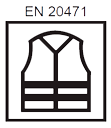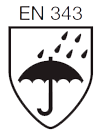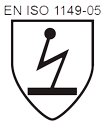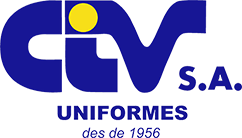No products
Prices are tax excluded
Product successfully added to your shopping cart
There are 0 items in your cart. There is 1 item in your cart.
EN ISO 13688:2013. PROTECTIVE CLOTHING. GENERAL REQUIREMENTS.
Protecting clothing replaces or covers personal clothing and it is designed to provide protection against one or more risks.
This standars regulates the general requirements of safety, ergonomics, aging, size designation, marking and information to be provided by the manufacturer.
EN ISO 20471:2013. HIGH-VISIBILITY CLOTHING.
High-visibility clothing aims to make visible the user's presence in the eyes of vehicle operators or other machined operators under any daylight or under the lighting of a vehicle's headlights in the dark.
Wearing a high-visibility garmet does not guarantee that the wearer will be visible in all conditions.
High-visibility clothing is grouped into three classes depending on the minimum surfaces of visible material. Below, there is a table where you can see such a classification:
| Minimum surface of visible materials (in m2) | |||
| Fluorescent background material | Retroreflective material | Combined material | |
| Class 1 | 0,14 | 0,10 | 0,20 |
| Class 2 | 0,50 | 0,13 | – |
| Class 3 | 0,80 | 0,20 | – |
The pictogram worn by the garmets is as follows:

CLASS 1: The minimum surfaces (in m2) required for the visible material are 0,14 of background material, 0,10 of retroreflective and 0,20 of combined.
They are used in activities that allow the user to be fully and no doubt seen by the vehicles that are approaching. There must be a sufficient separation between the worker and the traffic and the first of them must not travel at speeds exceeding 40 Km/h.
CLASS 2: The minimum surfaces (in m2) required for the visible material are 0,50 of background material and a 0,13 of retroreflective.
Its use is applied in situations where greater visibility is necessary in bad weather conditions or in situations where workers perform tasks that distract their attention from traffic or place them very close to the traffic in which vehicles travel at speeds greater than 40 Km/h.
CLASS 3: The minimum surfaces (in m2) required for visible material are 0,80 of fluorescent material and a 0,20 retroreflective.
They are used by personnel who are are exposed to great danger and perform high worload tasks and in situations of bad weather conditions and traffic at speeds above 80 Km/h.
EN ISO 343:2004. WEATHER PROTECTIVE CLOTHES.
The EN 343 standard is applied to materials and seams of protective clothes against the influence of environments characterized by the possible combination of rain, fog, snow and soil moisture.
The pictogram worn by the garmets is as follows:

The EN 343 standars contemplates two levels, both with values from 1 to 3, the effectiveness is greater when both values are greater:
Water vapour resistance: The standard specifies the test to measure the obstacle to the passage of the water vapour offered by the tissue, which represents the resistance to evaporation of sweat from the surface of your skin.
The higher the evaporative resistance, the lower the breathability.
This value is used to classify EPI into one of the three Classes, ranging from 1 to 3, from lowest to highest breathability.
Resistance to water penetration: The standard specifies the water pressure to which the outer material and seams are submitted, obtaining the resistance of the water penetration, using the value to classify the EPI into one of the three Classes, ranging from 1 to 3, from lowest to highest sealing.
EN ISO 11612:2010. PROTECTIVE CLOTHES AGAINST HEAT AND FLAME.
All clothing designed and manufactured in accordance with the UNE-EN ISO 11612 standard is category II except the designed and manufactured to allow intervention in hot environments of effect comparable to those of an ambient temperature or above 100º C that will be category III, with or without infrared radiation, flames or large projections of fusion materials.
Protective clothes that complies with this European standard is designed to protect workers from brief contact with flames and at least one type of heat. Heat can be in the form of convective heat, radiant heat, conductive heat, molten metal splashes or a combination of them.
All garmets that comply with the EN ISO 11612:2008 standard must be marked with codes A1 and/or A2 (behavior to flame propagation) and at least with one more code B, C, D, E or F (types of heat) followed by a number indicating the level of performance achieved.
Code A: Behavior to flame propagation
Code B: Resistance to convective heat
Code C: Resistance to radiant heat
Code D: Resistance to cast aluminum splashes
Code E: Resistance to cast iron splashes
Code F: Resistance to heat by contact
The pictogram worn by the garmets is as follows:

EN ISO 1149-5: 2008. PROTECTIVE CLOTHES. ELECTROSTATIC PROPERTIES.
This European standard specifies the electrostatic requirements and testing methods for protective garmets that dissipates static electricity to prevent sparks that can cause fire. The requirements are not sufficient to oxygen-enriched flammable atmospheres.
This European standard is not applicable to protection against electrical voltages.
The pictogram worn by the garmets is as follows:

EN ISO 11611: 2007. PROTECTIVE CLOTHES USED DURING THE WELDING AND RELATED PROCESSES.
This standard establishes the essential minimum safety requirements and testing methods for protective clothes to be worn during welding and related processes with comparable risks.
This type of protective clothes is intended to protect the user from splashing (small drops of moltenn metal), short-lived contact with a flame, radiant heat from the arc, and they minimize the possibility of brief electric shock by electrically current conductor at voltages up to approximately 100 V d.c. under normal welding conditions.
p>This standard includes two types of classes, which are the following:CLASS 1: it corresponds to the protection against welding techniques and les dangerous situations, causing lower levels of splashing and radiant heat.
CLASS 2: it corresponds to the protection against welding techniques and more dangerous situations, causing higher levels of splashing and radiant heat.
The pictogram worn by the garmets is as follows:

EN ISO 61482-2: 2009. PROTECTIVE CLOTHES AGAINST THERMAL RISKS OF AN ELECTRIC ARC.
Protective clothes that complies with this standard are designed to protect workers who are exposed to the risk of an electric arc. The garmets protect the worker from the different damages arising from the exposure of the same to this type of risk.
This standard is grouped into two types of classes:
CLASS 1: Arc Test 4KA / 0,5 s
CLASS 2: Arc Test 7kA / 0,5 s
The pictogram worn by the garmets is as follows:

